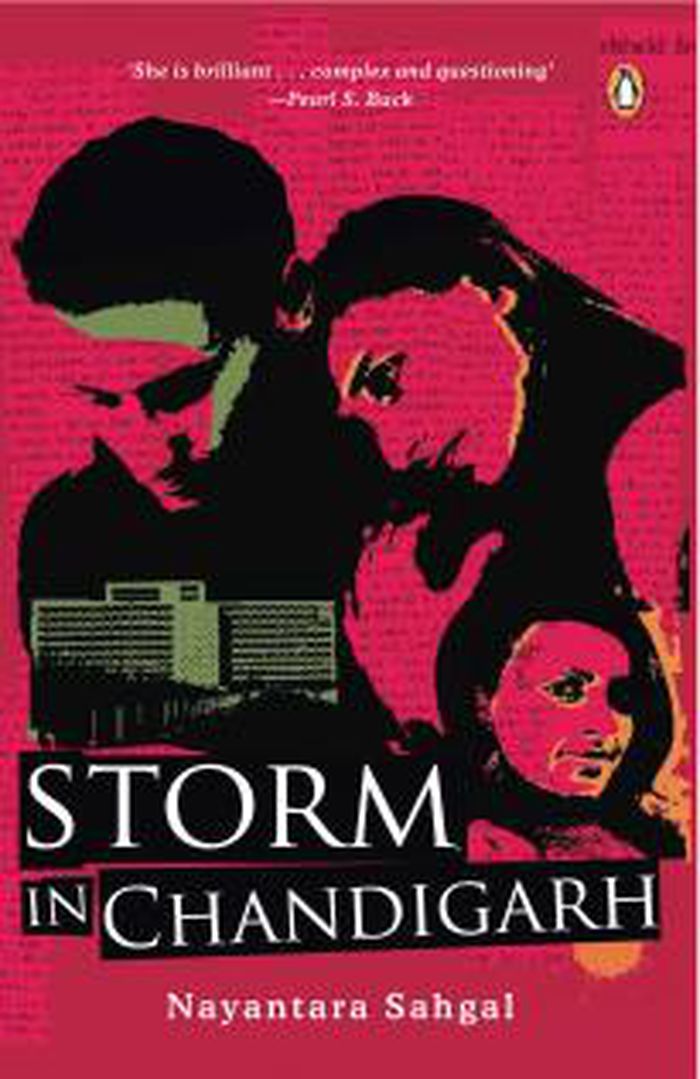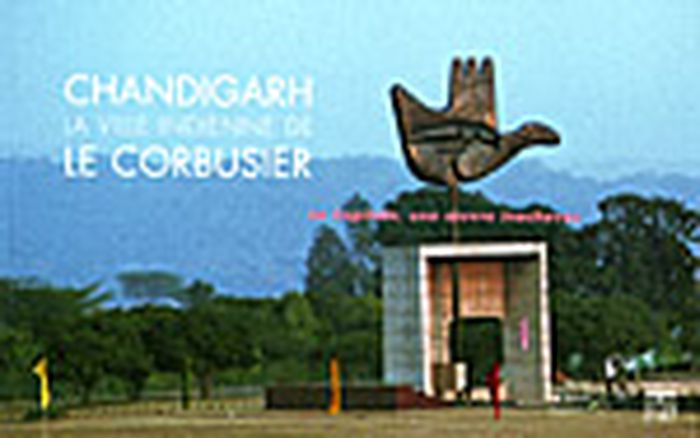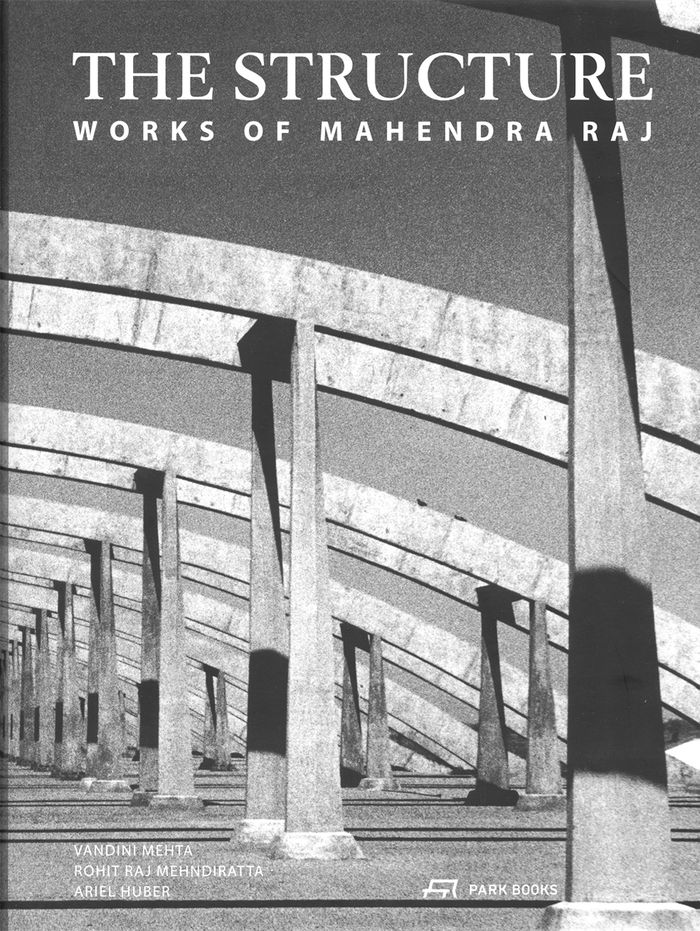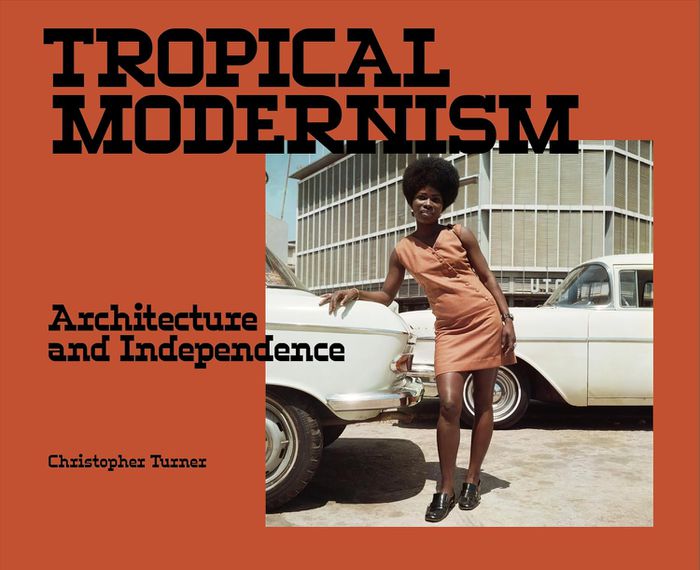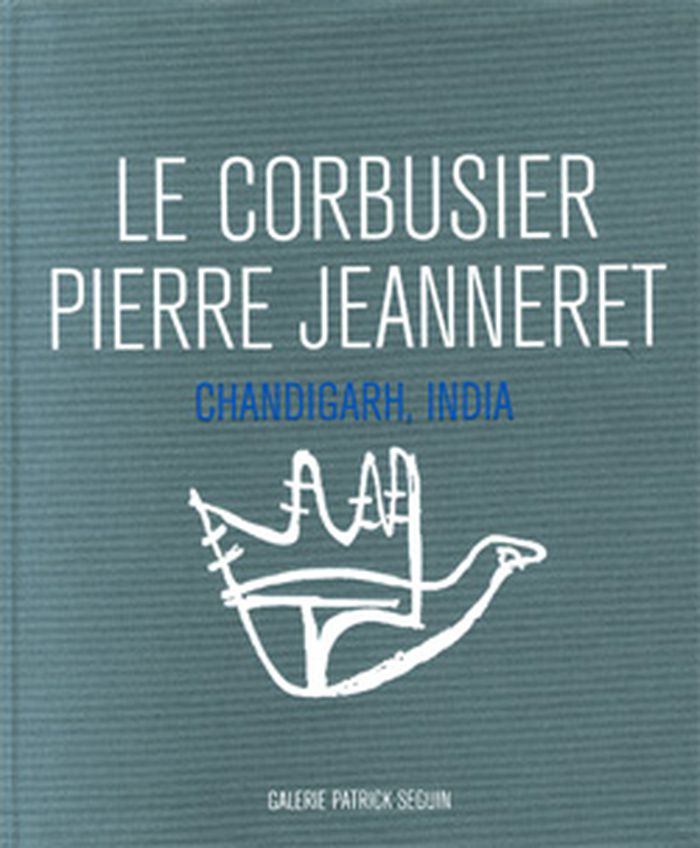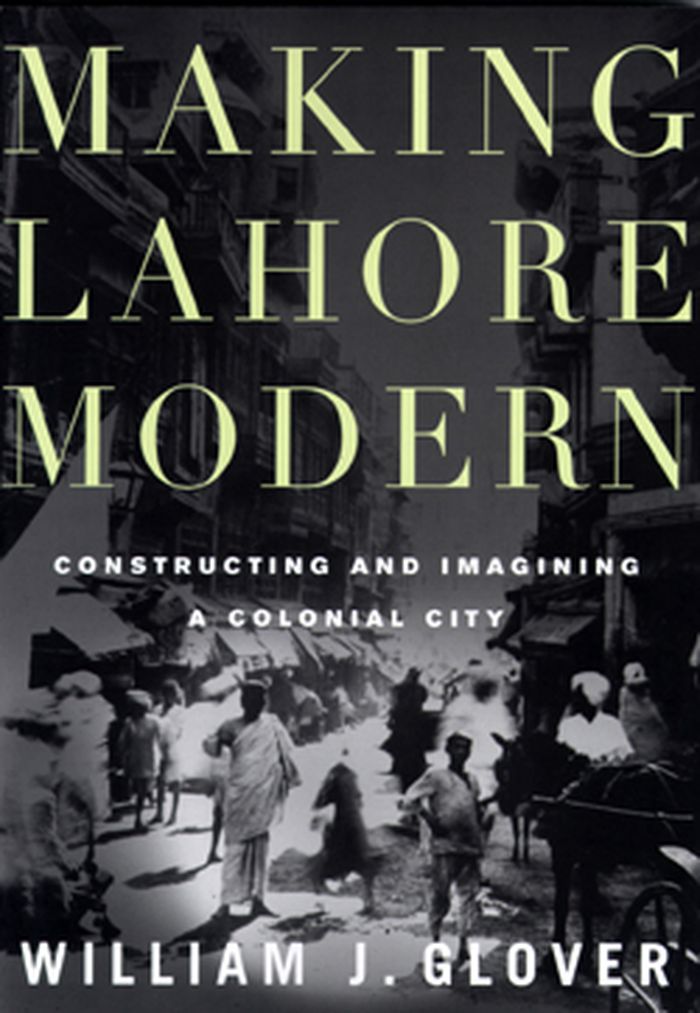livres
Description:
431 pages : illustrations (chiefly color), facsimiles, plans, portraits ; 30 cm
Paris : Galerie Patrick Seguin, ©2014.
Le Corbusier, Pierre Jeanneret : Chandigarh, India, 1951-66 / [texts, Hélène Bauchet-Cauquil, Françoise-Claire Prodhon, Patrick Seguin ; project director, Michael Roy ; English translation, John Tittensor, Jeremy Harrison].
Actions:
Exemplaires:
Description:
431 pages : illustrations (chiefly color), facsimiles, plans, portraits ; 30 cm
livres
Paris : Galerie Patrick Seguin, ©2014.
livres
Description:
323 pages : illustrations ; 25 cm
Ostfildern, Germany : Hatje Cantz Verlag, ©2013.
Le Corbusier's secret laboratory : from painting to architecture / edited by Jean-Louis Cohen ; with Staffan Ahrenberg ; with essays by Jean-Louis Cohen ... [et al. ; translations, Caroline Higgitt, John Wheelwright, John Tittensor].
Actions:
Exemplaires:
Description:
323 pages : illustrations ; 25 cm
livres
Ostfildern, Germany : Hatje Cantz Verlag, ©2013.
Storm in Chandigarh
$24.95
(disponible sur commande)
Résumé:
‘India, once a uniform piece of territory to administer, was now a welter of separate, sensitive identities, resurrected after independence.’ As the quarrel over boundaries, water and electric power between Punjab and the newly created Haryana intensifies, Gyan Singh, the chief minister of Punjab, threatens to launch a crippling strike that will affect both states. With(...)
Storm in Chandigarh
Actions:
Prix:
$24.95
(disponible sur commande)
Résumé:
‘India, once a uniform piece of territory to administer, was now a welter of separate, sensitive identities, resurrected after independence.’ As the quarrel over boundaries, water and electric power between Punjab and the newly created Haryana intensifies, Gyan Singh, the chief minister of Punjab, threatens to launch a crippling strike that will affect both states. With the chief minister of Haryana, Harpal Singh, refusing to concede any advantages, the stage is set for a confrontation.
Arch Moyen-Orient
$37.50
(disponible sur commande)
Résumé:
Chandigarh, destinée lors de l'indépendence de l'Inde à devenir la capitale du Punjab, permet à Le Corbusier de matérialiser ses théories : créer une ville où l'on peut harmonieusement vivre, travailler, développer son corps et son esprit. Actes d'un colloque entièrement consacré à la ville indienne, cette ouvrage invite à une large réflexion sur la question encore non(...)
Architecture, monographies
mai 2002, Paris
Chandigarh : la ville indienne de Le Corbusier
Actions:
Prix:
$37.50
(disponible sur commande)
Résumé:
Chandigarh, destinée lors de l'indépendence de l'Inde à devenir la capitale du Punjab, permet à Le Corbusier de matérialiser ses théories : créer une ville où l'on peut harmonieusement vivre, travailler, développer son corps et son esprit. Actes d'un colloque entièrement consacré à la ville indienne, cette ouvrage invite à une large réflexion sur la question encore non résolue de l'achèvement de la place administrative du Capitole. Maquettes, dessins, plans, mais aussi peintures, sculptures et tapisseries rendent compte de cette épopée.
Architecture, monographies
$95.00
(disponible sur commande)
Résumé:
This new book explores the work of Mahendra Raj, arguably India's most significant structural engineer. Born in 1924, Raj studied in Lahore and gained first working practice at the Punjab Public Works Department. He completed his education by working with engineering firms in the US and degrees he took from University of Minnesota and Columbia University, New York in(...)
Architecture, monographies
septembre 2016
The structure: works of Mahendra Raj
Actions:
Prix:
$95.00
(disponible sur commande)
Résumé:
This new book explores the work of Mahendra Raj, arguably India's most significant structural engineer. Born in 1924, Raj studied in Lahore and gained first working practice at the Punjab Public Works Department. He completed his education by working with engineering firms in the US and degrees he took from University of Minnesota and Columbia University, New York in 1955-59. He established his independent practice in New Delhi in 1960. ''The Structure'' features twenty-eight of Mahendra Raj's buildings from all periods of his career in detail and richly illustrated with photographs and colour reproductions of archival plans as well as selected sections and plans.
Architecture, monographies
$63.00
(disponible en magasin)
Résumé:
Emerging in the death throes of colonial rule, the story of ''Tropical Modernism'' is one of politics and power, decolonization and defiance. Its leading proponents, British architects Jane Drew and Maxwell Fry, adapted a utopian Bauhaus-derived Modernist aesthetic to hot and humid conditions. After Independence, ''Tropical Modernism'' was championed by leaders including(...)
Tropical Modernism: Architecture and independence
Actions:
Prix:
$63.00
(disponible en magasin)
Résumé:
Emerging in the death throes of colonial rule, the story of ''Tropical Modernism'' is one of politics and power, decolonization and defiance. Its leading proponents, British architects Jane Drew and Maxwell Fry, adapted a utopian Bauhaus-derived Modernist aesthetic to hot and humid conditions. After Independence, ''Tropical Modernism'' was championed by leaders including Jawaharlal Nehru and Kwame Nkrumah as a symbol of freedom, progressiveness and internationalism in monumental projects such as Chandigarh in Punjab planned by Le Corbusier and Black Star Square in Accra designed by Victor Adegbite. Scrutinizing the colonial narratives surrounding ''Tropical Modernism'', and foregrounding the experience of African and Indian practitioners, this book reassesses an architectural style which has increasing relevance in today’s changing climate.
Modernisme
$190.00
(disponible sur commande)
Résumé:
In 1947, shortly after India gained independence, the Indian Prime Minister Jawaharlal Nehru initiated a vast plan of modernization throughout the country, during which Chandigarh became the administrative capital of the Punjab province. Nehru commissioned Le Corbusier and Pierre Jeanneret to construct this capital from scratch, with the sole instruction that they should(...)
Architecture, monographies
octobre 2014
Le Corbusier and Pierre Jeanneret: Chandigarh, India
Actions:
Prix:
$190.00
(disponible sur commande)
Résumé:
In 1947, shortly after India gained independence, the Indian Prime Minister Jawaharlal Nehru initiated a vast plan of modernization throughout the country, during which Chandigarh became the administrative capital of the Punjab province. Nehru commissioned Le Corbusier and Pierre Jeanneret to construct this capital from scratch, with the sole instruction that they should be expressive and experimental and should not let themselves be hindered by tradition. Illustrated with photographs dating from the time period to the present, this book documents the architectural project and the production of the furniture, offering a definitive summary of this epic modernist enterprise. A further chapter is dedicated to the work of Lucien Hervé, the famous architectural photographer who depicted the city extensively.
Architecture, monographies
$38.00
(disponible sur commande)
Résumé:
Fifty years after the British annexed the Punjab and made Lahore its provincial capital, the city—once a prosperous Mughal center that had long since fallen into ruin—was transformed. British and Indian officials had designed a modern, architecturally distinct city center adjacent to the old walled city, administered under new methods of urban governance. In Making(...)
Théorie de l’urbanisme
janvier 1900, Miineapolis, London
Making Lahore Modern: constructing and imagining a colonial city
Actions:
Prix:
$38.00
(disponible sur commande)
Résumé:
Fifty years after the British annexed the Punjab and made Lahore its provincial capital, the city—once a prosperous Mughal center that had long since fallen into ruin—was transformed. British and Indian officials had designed a modern, architecturally distinct city center adjacent to the old walled city, administered under new methods of urban governance. In Making Lahore Modern, William J. Glover investigates the traditions that shaped colonial Lahore. In particular, he focuses on the conviction that both British and Indian actors who implemented urbanization came to share: that the material fabric of the city could lead to social and moral improvement. This belief in the power of the physical environment to shape individual and collective sentiments, he argues, links the colonial history of Lahore to nineteenth-century urbanization around the world. Glover highlights three aspects of Lahore’s history that show this process unfolding. First, he examines the concepts through which the British understood the Indian city and envisioned its transformation. Second, through a detailed study of new buildings and the adaptation of existing structures, he explores the role of planning, design, and reuse. Finally, he analyzes the changes in urban imagination as evidenced in Indian writings on the city in this period. Throughout, Glover emphasizes that colonial urbanism was not simply imposed; it was a collaborative project between Indian citizens and the British. Offering an in-depth study of a single provincial city, Glover reveals that urban change in colonial India was not a monolithic process and establishes Lahore as a key site for understanding the genealogy of modern global urbanism. William J. Glover is associate professor of architecture at the University of Michigan.
Théorie de l’urbanisme
livres
Voyage à Chandigarh
$83.95
(disponible en magasin)
Résumé:
C'est à Chandigarh, capitale indienne au pied de l'Himalaya, que Le Corbusier mit en oeuvre pour l'unique fois de sa vie ses théories urbaines à l'échelle d'une ville entière. En 1947, lors de la partition de l'Inde et du Pakistan, l'état du Punjab fut divisé : Lahore, son ancienne capitale, étant désormais au Pakistan, Nehru confia trois ans plus tard la construction(...)
Voyage à Chandigarh
Actions:
Prix:
$83.95
(disponible en magasin)
Résumé:
C'est à Chandigarh, capitale indienne au pied de l'Himalaya, que Le Corbusier mit en oeuvre pour l'unique fois de sa vie ses théories urbaines à l'échelle d'une ville entière. En 1947, lors de la partition de l'Inde et du Pakistan, l'état du Punjab fut divisé : Lahore, son ancienne capitale, étant désormais au Pakistan, Nehru confia trois ans plus tard la construction d'une nouvelle capitale à une équipe dirigée par Le Corbusier. En photographiant Chandigarh à partir de 2010, l'intention de Manuel Bougot était de faire un portrait intime de la ville en figeant sur la pellicule exclusivement des intérieurs privés et administratifs. Mais face à l'architecture impressionnante des sites et notamment celle du Capitole Complex, qui regroupe la Haute cour de justice, l'Assemblée législative et le Secrétariat général, ce projet a évolué pour raconter cette ville que ses habitants appellent "The City Beautiful". Manuel Bougot s'est attaché à montrer l'appropriation par les Indiens de cette architecture occidentale et, au-delà, la confrontation de deux cultures que tout semblerait opposer, faisant un état des lieux soixante ans après la naissance de cette capitale prévue pour cinq cent mille habitants et qui en compte aujourd'hui plus de deux millions. A des années-lumière de l'idée que l'on se fait des grandes villes indiennes, au coeur de la densité minérale des bâtiments en béton, Chandigarh exhibe de magnifiques espaces verts, des parcs luxuriants où écureuils et singes se promènent en liberté et où les habitants font leur jogging quotidien. C'est cette capitale originale, le plus grand chantier de Le Corbusier, que nous restitue le photographe, dans ce livre auquel contribuent également l'historienne de l'architecture Caroline Maniaque, et l'architecte indien Balkrishna Doshi, Pritzker prize 2018, qui accompagna Le Corbusier dans cette aventure hors norme.
livres
décembre 2019
Trajets
